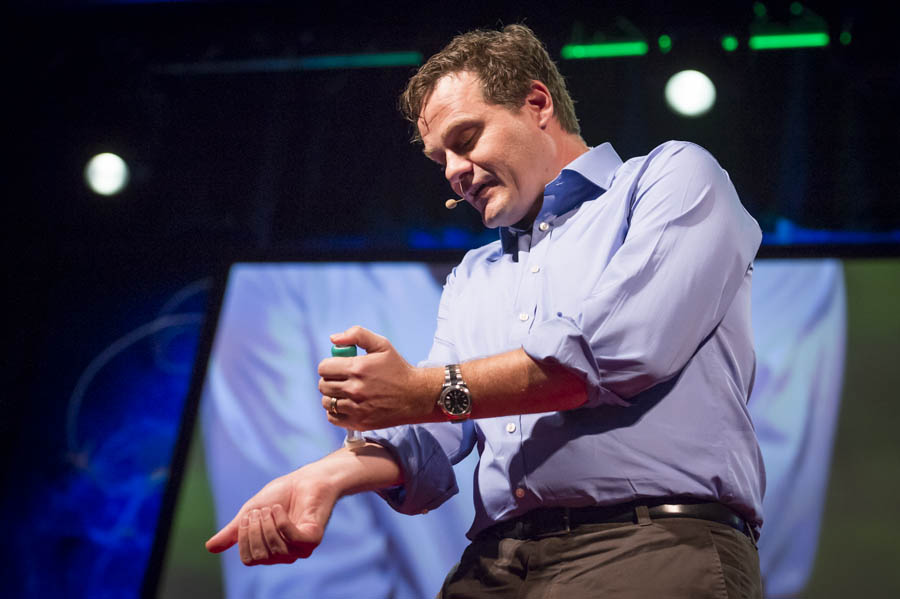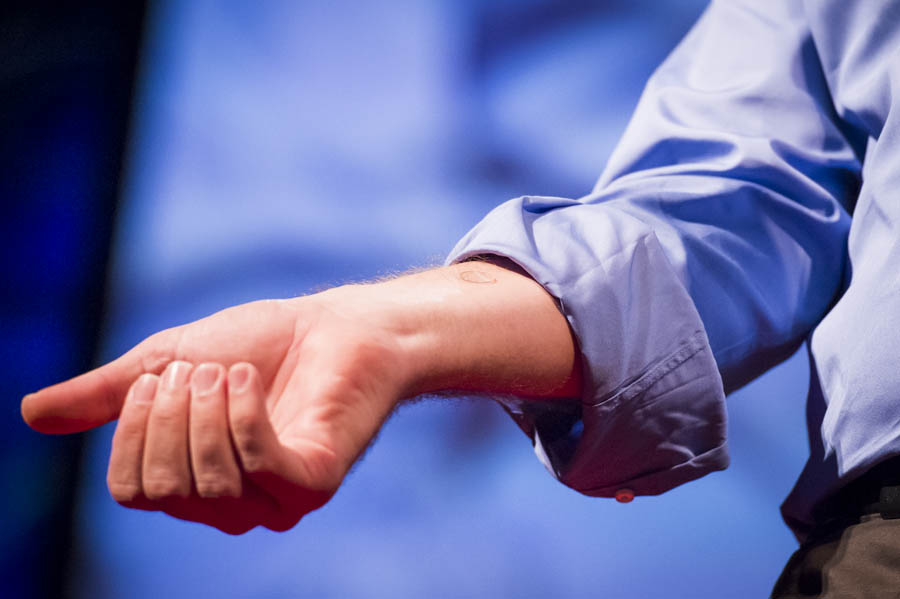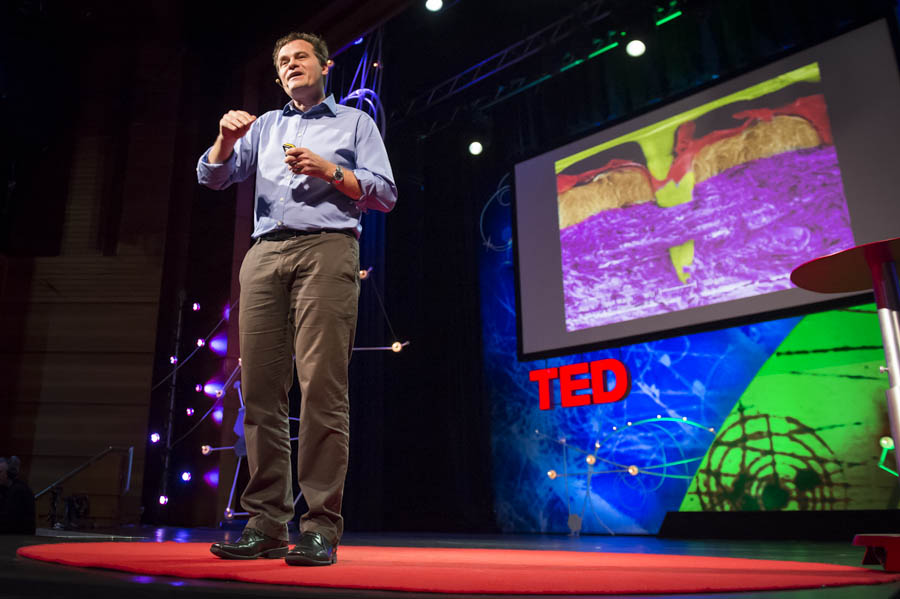Mark Kendall has a new medical invention that will make anyone with a fear of needles very happy: the Nanopatch, a tiny square (smaller than a postage stamp) that can deliver a dose of vaccine. But beyond solving needle-phobia, the Nanopatch could solve many other problems that now keep vaccines from being completely effective.
Kendall, a biomedical engineer, is thrilled to present this new technology at TEDGlobal 2013 in Edinburgh, Scotland, just two miles from the birthplace of the needle and syringe in 1853. Since this classic delivery system was invented, it’s made huge leaps and bounds in preventing disease and extending human lifespan. But it has stayed essentially the same for those 170 years. And the needle has limitations, says Kendall. Twenty percent of the population is instinctively scared of needles. They also leave open the possibility of needle-stick injuries, which cause 1.3 million early deaths per year. But even beyond that, the needle and syringe may limit a vaccine’s overall effectiveness.
Needles deliver vaccines into muscle, missing the immune sweet spot of the skin, says Kendall. Meanwhile, the Nanopatch is designed with thousands of tiny projections dry-coated with vaccine. When the Nanopatch is stuck on the skin, the vaccine is delivered to the right cells, just under the outer layer of skin. Kendall’s research in animals shows that a 450 ng dose of an influenza vaccine was far more effective delivered through the patch than 600 ng of the same vaccine delivered via a needle.
Because less vaccine is needed for Nanopatch delivery, it could make an expensive vaccine more viable to distribute in the developing world. Kendall hopes that it could also help scientists create vaccines for diseases like HIV, malaria and tuberculosis.
Another weakness of needle delivery vaccine is that the vaccine must be a liquid, and it must be refrigerated from its creation all the way through to its delivery into the body — a multi-step journey knows as the “cold chain.” This is a big problem because, according to the WHO, half the vaccines used in Africa aren’t effective because the cold chain has been broken at some point. Because the Nanopatch is coated with a dry vaccine, it won’t need refrigeration.
Kendall tells us that the Nanopatch is beginning a pilot test in Papa New Guinea, a developing country the same size as France. The nation has the highest rate of HPV, and yet there are only 800 fridges available to keep vaccines cold. The Nanopatch could help distribute this vaccine there.
Could TED have just witnessed the unveiling of the new needle and syringe?



Comments (10)
Pingback: Vaccines via a patch: Mark Kendall at TEDGlobal 2013 – OneVentures Pty Ltd
Pingback: Medicine Malaysia » Nanotechnology : future of vaccines
Pingback: Painless Vaccinations Coming Soon! | The Doctor Weighs In
Pingback: Presentation, vaccines, research, Google, innovation, Lost City | ស្រែខ្មែរ | srai khmer
Pingback: Saturday morning coffee [June 15 2013]: The Purge, Nanopatch, NSA, Adherence, Smartphones, CPOE « Jerry Fahrni